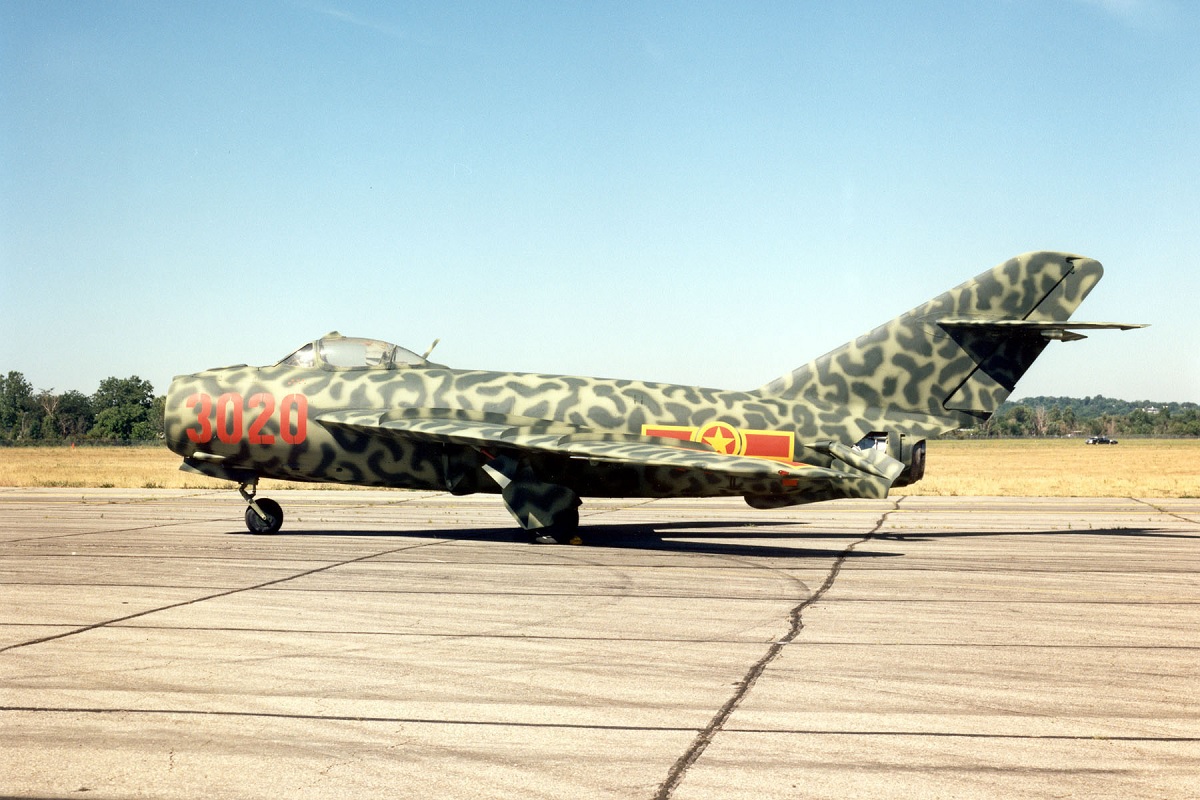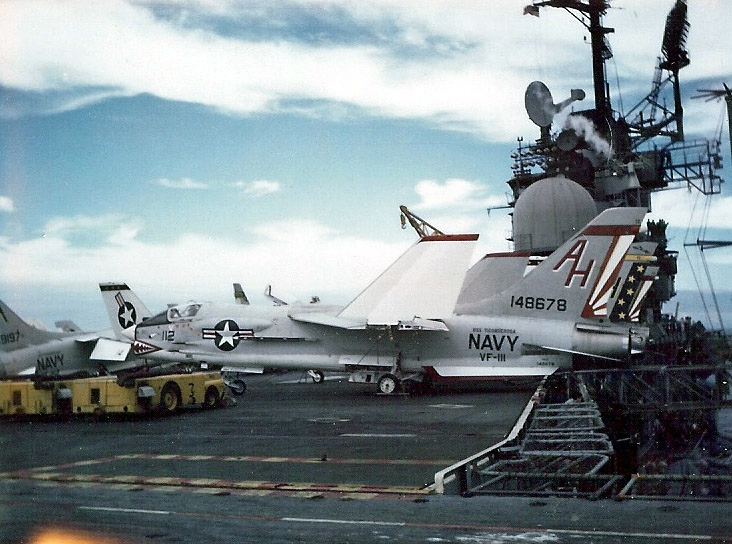Capt. Wilfred K. Abbott pulled the black and yellow handle to launch himself out of the falling F-8 because the controls were non-responsive. Seven years of captivity followed his parachute landing
The F-8 Crusader, which was numerically the most prevalent fighter in the U.S. Navy at the start of America’s involvement in the Vietnam War in 1964 with 482 F-8C/D/Es outfitting 17 frontline units, was known to its pilots as the “last of the gunfighters” due to its quartet of Colt-Browning Mk12 20mm cannons (its great naval rival, the F-4 Phantom II, was armed exclusively with missiles).
During the Rolling Thunder campaign in 1965–1968, it had significant success against North Vietnamese MiG-17 and MiG-21 aircraft, downing 18 aircraft in total—officially representing 53 percent of all MiG claims made by Navy squadrons during this time.
However, on September 5, 1966, the Crusaders of the USS Oriskany suffered a rare F-8 air-to-air loss. On that day, the Sundowners of VF-111 provided four Target Combat Air Patrol (TarCAP) fighters during a strike on enemy transport targets close to Phy Ly. Lt. Cdr. Foster Teague led the first pair, and Capt. Wilfred K. Abbott, a USAF exchange pilot flying since 1958, led the second pair.
Teague took his wingman inward to protect the A-4 Skyhawks, leaving Abbott and Lt. Randy Rime to orbit offshore, as described by Barrett Tillman and Henk Van der Lugt in their book VF-11/111 “Sundowners” 1942-95. Teague egressed when he ran out of fuel, allowing Abbott to move in and continue guarding the A-4s. Situational awareness was compromised when Rime was forced to follow Abbott on a trail due to cloud cover. Abbott and Rime were startled to see two MiG-17s emerge from the clouds while they were circling at 6,000 feet.
Without being noticed, the “Red Bandits” maneuvered into gun range and fired 23 mm cannon rounds at Rime’s Crusader. Abbott took a shot from the stalkers at a 90-degree angle while covering Rime. The challenging gunnery challenge—a close-range, high-deflection shot—was where he put his faith. The USAF pilot had to deal with North Vietnamese opponents who could fire.

The Crusader was struck numerous times, all of which were fatal. Abbott’s instrument panel was broken, his canopy was damaged, and his helmet was knocked off. Abbott pulled the black and yellow handle to launch himself out of the destroyed Vought because the controls were non-responsive. The sole enemy jet loss for the “Sundowners,” he parachuted into seven years of captivity.
Randy Rime just about made it. He escaped his attackers despite being slightly hurt by glass shards from his canopy and just had enough fuel to limp back to the “0-Boat.” He missed the wave-off lights, caught a wire after it had already passed, and his starboard wheel came off. About 300 lbs of JP-5 were still in Rime’s possession, but not enough to make another pass at the deck.
Oriskany then double-checked with the controllers in charge of keeping an eye on enemy radio nets and locating hostile aircraft. It soon became clear that the two MiGs had mishandled an earlier attempt to hit the F-8s before being told to adjust their position for the successful bounce. Abbott and Rime had been refused access to this crucial information for unspecified reasons. Later, Abbott recalled:

‘On September 5, I was flying my F-8 Crusader in bright and sunny conditions when I was shot down over North Vietnam. In the ejection, my right leg was broken. After the leg was finally operated on, I was in a cast for about four months. It took about two years, with my roommates’ help, for me to achieve full use of the leg. It was my constant desire not to be a cripple so as to fly again someday. Other than my leg, the treatment and daily routine as a POW were similar to that described by most other veterans. The food was just enough to sustain life. A constant battle was to keep our minds active. In the early years, communication was extremely limited, but in the last couple of years, we were able to conduct our own educational programs — courses in everything from languages and mathematics to meat cutting, duplicate bridge, and Toastmasters.’
Nguyen Van Bay, North Vietnam’s first ace, who had already been involved in the downing of two Crusader aircraft—an RF-8A and an F-8E—off USS Hancock (CVA-19) on June 21, 1966, might have been the cause of Abbott’s demise. He claimed an F-105 and an A-4 later that month (both of which are not supported by U.S. records), adding four additional victories in April 1967. Van Bay was thus one of only four MiG-17 pilots from the Vietnamese People’s Air Force (VPAF) who likely took part in the downing of five or more American aircraft.
VF-11/111 ‘Sundowners’ 1942-95 is published by Osprey Publishing and is available to order here.
Photo by U.S. Navy and U.S. Air Force

